Video Grow Light Video Update
The grow light is getting close to exhibition-ready state. Here is a short video update with direct sound followed by sound recorded in-situ. The veggies are pretty happy right now so I hope they like the air quality in the galleries. It would be nice if more people came to see them and brought their CO2 excretions! Veggies love that carbon dioxide, Mmm-hmm.
The exhibition will happen in Syracuse and New York City. The Syracuse exhibition will run from April 4 through May 12, 2013 during normal SUArt Galleries hours: Tuesday through Sunday 11:00 – 4:30, and Thursday evenings until 8:00pm. The opening reception will be held on Thursday, April 4th from 5:00 to 7:00pm.
The New York City exhibition will happen at 25CPW Gallery in Manhattan, May 22nd through May 26th between noon and 8pm. The opening reception is Thursday, May 23rd 6-8pm.
Video Grow Light 2
People have cultivated plants and have enjoyed plant spectatorship for centuries. From the hanging gardens of Egypt to the potted plants of today: they all required peopleʼs care and management. People continue to get to know plants better: we want to know how plants work and live. Ethnobotany opens the door for us to wrap our minds around the unparalleled influence plants have had on us humans: everything from food, to building material, to medicine is derived from plants.
New evidence shows that plants have evolved a vast array of systems to coexist with mobile creatures: by looking at their adaptations ranging from secretion of poisons to subtle chemical plant-to-plant communication we catch a glimpse of their awareness. Historically, our consciousness has been heavily influenced by plant cultivation and pharmacology.
At this point in our human development however, our impact on plants is so incredibly great that our pollution is a power that rivals the forces of nature. Humans, it turns out, were never really apart from nature but are instead incredibly linked with it through all our activities. What can our culture do for plants in return for all they’ve helped us do? Can we turn cultural waste into fertilizer?
Video Grow Light
Iʼve been researching radical ecology design as a strategy for making art. While creating a living ecosystem for my Toiletponics public installation I created a grow light for the vegetables growing in the sculpture.
Other people have created many types of grow lights before. But all the available grow lights are static. Time-lapse photography already showed us that many plants follow the sun across the sky over the course of the day. To make plants happier under ʻunnaturalʼ light, I decided to create dynamic lighting conditions for growing plants. YouTube—with 48 hours of new video uploaded every minute—is a rich source of dynamic visual content organized in a folksonomy held together by cultural links.
I created a software filter that picks YouTube videos with the best color temperatures for plants. I am projecting the algorithmically curated video onto plants to make them grow. The project celebrates the aesthetic nexus of natural and the cultural ecologies. The photo above is of the grow system in action. This work will result in a physical installation and more photos coming soon.
Our Ruby Slippers Take Flight
For my public installation Journey, the entry point was Toiletponics. Once inside the container, visitors were greeted with a domestic scene of a traveler. There was a set of Ruby Slippers that Tim Westbrook made for me. Now Tim took the idea and ran with it, and created a whole series of shoes! Amazing work, Tim! And you even made the Smithsonian take notice. Since the Smithsonian has the original shoes from the movie, would they let me borrow them for the next installation? Although, I now like the slippers Tim made for me better!
When Tim and I had our first meeting about this project, it was Spring and we were eating waffles. We were sharing our fascination with the Wizard of Oz. For me, the film has always represented the immigrant story. I read Russian versions of the book as a kid. I was also influenced by Hans Christian Anderson’s story of the little mermaid. She gave up her language to be more like her new human lover. I was thrilled when I finally lay my hands on these slippers: they have that Judy Garland sparkle with a fresh fish scale feel!
In the installation, I displayed the shoes separately and akimbo. The vessel was jostled on the stormy winds and the shoes went flying. But the traveler left the container without taking the shoes. The visitor is here to stay. It was great working with Tim and I look forward to doing so again!
Journey Closing Reception & Beefadou Retirement Ceremony
When: This Tuesday October 23rd from 7:30pm to 8pm followed by a pub crawl.
Where: Shipping container at the Columbus Circle grove of trees (map link here).
You are invited to a lecture performance featuring a ceremony of transformation. Journey is a public art installation in downtown Syracuse. The centerpiece and entry point of the installation is Toiletponics. The chief nutrient source for the food-producing ecosystem is a tilapia fish who’s excrement is recirculated as fertilizer for the vegetables. The fish is named Beefadou and he is ready to retire. Please come to see a short lecture performance by the artist to celebrate the closing of the installation and witness Beefadou’s actual retirement live. A pub crawl through downtown will follow.
Come to commemorate broken and reinvented models of existence, transmutation of waste into value, and ecopoetry. Witness the remarkable story of an artist’s quest to aesthetically package the Nitrogen cycle and one fish’s transformation from lab rat, to livestock, and finally to a pet. The installation will continue to operate until October 27th using another experimental nutrient source.
Short TV News Report video on the project:
Scroll down for the Google Map of the location.
Toiletponics Grow Light

My installation at the TONY 2012 is a ship for traveling to parallel universes. The entry point and centerpiece of this shipping container installation is the aquaponics toilet farming I call Toiletponics. I outfitted a pink 1950s American Standard toilet with all the requirements for sustaining life. In this alchemical self-sustained ecosystem, shit is transmuted into food.
I’ve been doing research on using urine as fertilizer. However, for the installation downtown the food toilet is running in aquaponics mode. A half pound tilapia fish (rescued from a science experiment) is living in the bowl.
It’s waste is pumped out of the bowl and into the tank where it mixes into the growing medium containing several strains of nitrifying bacteria which convert waste into nitrogen fertilizer. Edible plants grow in the medium and absorb the nutrients made available by said bacteria. As the plants thrive, the tilapia enjoyes naturally cleaned water trickling back into the toilet bowl. But the container doesn’t let in much natural light which the plants require. I created a special LED-based grow light out of a matching pink sink. The LEDs are water cooled, and the waste heat is captured to heat the water for the fish.
Fluorescent lights are marketed as a ‘green’ technology. But even though they are more energy efficient than incandescent bulbs they contain mercury which is a poison. I like LEDs better. I used a combination of high powered red and red green blue (RGB) LEDs to achieve the right balance of light. Plants, it turns out, don’t like green light. They appear green to us because they are bouncing all of the sun’s green rays right back away from themselves. I used high frequency red light (it penetrates the plant’s bodies) and RGB LEDs with the blue light turned on to satisfy plants’ taste for the blues. I also dialed in some green to balance out the light for human enjoyment as well. These high powered LEDs produce a ton of heat and if the heat is not dissipated the LEDs grow dim and can even burn out.
Enter the heat sink! The matching pink sink is cast iron and serves as a great heat sink for the LEDs. But it becomes even better with water cooling and heat recycling!
I’m stopping it up and pumping the toiletponics water through it. The water cools the heat sink and in turn heats up. When it finally flows out back into the toilet bowl through the white hose it is warmer to please the tilapia (a species hailing from balmy Egypt).
I used some handy Instructables tutorials for my LED work. Here is a very basic tutorial describing how to drive an LED with a Voltage Regulator IC. Here is a comprehensive tutorial iterating over several driver circuit designs integrating capacitors for smoothing power spikes. I didn’t end up using capacitors as I didn’t notice any real spikes in my power supply (the city’s holiday light socket in the park pole).
This next one is what I found after deciding to do tunable RGB LED lights in our sauna project. It also describes an overload protection circuit for preventing what is called Thermal Runaway which I haven’t found happening with my system. I measured voltage and current after hours of operation and didn’t see it.
I’m looking forward to finishing the installation and opening it for the public.
Berlin — A Tuned City
There are a few things I really like about Berlin besides walking around with open beer. Dogs have reached consensus to act calm and have achieved independence from leashes. Bicycling is encouraged: there are bike paths, bike lanes, and bike traffic lights. There are lots of bike shops (and there is even one open on Sunday at Alexanderplatz if you need it). In this post I’ll review art and architecture in Berlin, and generate pink noise!
The soundscape of the city is unique with birds. Caitlin says that bugs beget birds. But where are the bugs coming from? Maybe all the green roof subsidies? Speaking of subsidized culture, we’ve visited a lot of museums (Pergamon with Babilonia artifacts, Hamburger Banhoff with the Beuys and fog sculptures by Anthony McCall) as well as artist run centers or ‘producer galleries’ (téte, Grimmuseum, General Public) showing great photography (Julia Kissina), sound installations (Cia Rinne), and interactive installation (Antonia Low). We also checked out a talk by an english acoustician Max Dixon at the Guggenheim Lab.
Dixon inaugurated acoustics-based urban planning. Don’t just remove traffic noise in London because it repeals the drunken arguments! Walk-ways that tune foot-fall so you can hear who’s coming and who is going. When you can’t hear yourself move, it feels like your sound-bubble shrunk to be smaller than the size of your body. I remember walking along a loud highway and feeling so insignificant that I feared the gust of a hurtling truck passing by would toss me into the air like a feather. What about roofs designed for tuned rainfall? In the jungle, every species finds their sound niche. Each animal evolves to locate their sound in a certain frequency and to space their sound out temporally so they can be heard by their kind at a distance. What if instead of volume-based sound regulations we had frequency related regulations too? What if we admitted that the sound environment is an ecosystem?
What if urban environments engaged in call and response? Fountains and waterfalls generate pink noise (noise spaced out by octaves). This is a pleasing noise blanket, much better than the harsh white noise (all frequencies at all levels) which sounds hissy. Fountains mask noise. But some new fountains grow when it is loud and peter out when it is quiet. To show my appreciation, I generated a one minute pink noise track for you to enjoy (two noise sources per stereo channel) so please relax!
Trying out Google SketchUp for our Mobile Sauna project

I am collaborating on a public art project with 3 other artists. It has been a struggle, but the goal is worth it: a mobile sauna that will keep us going through the winter. As another Syracuse winter circles the runway for a soon-to-be landing, we keeping our Kickstarter campaign going strong in order to make the deadline of January 2nd and to reach our funding goal. But the winter is coming, and we are forced to work on the sauna before we get our funding. Google SketchUp is helping us achieve our goal by letting us quickly try out different internal layouts.
Kickstarter’s all-or-nothing policy means that we won’t get any of our pledged funding if we don’t reach our full goal. Despite this, we have no choice but hope for the best and work on the sauna anyway because the winter is coming! We’ve used up our modest grant from SU’s VPA, and are going into personal dept in order to at least protect what we’ve done so far from the rapacious winter. We built the outer shell on top of our trailer, and will soon be able to fire our stove to keep warm during construction. In order to communicate to our supporters the imminent mobile sauna experience, we decided to create a 3D sketch of what the internal space will be like. Incidentally, a very successful kickstarter campaign called PrintrBot discusses Google SketchUp as an accessible modeling tool, and I decided to try it.
I installed the free version of the program, and spent about an hour watching the 4 introductory how-to videos (here is part 1). Google SketchUp has a lot of really nice snapping behavior allowing me to easily align edges of objects. Google SketchUp is smart: in the middle of drawing and edge I can hover over other edges to find their mid-points, and then Google SketchUp generates guide-lines on the fly. The program provides an easy interface to Google’s 3D Warehouse which allowed me to download a variety of human models and play with different configurations of internal sauna seating. Trying out different combinations of seating arrangements was straight forward, and every team member’s ideas could be quickly tried out. In the end, we went with the most colorful example for our Kickstarter update.
The World’s First Aquaponics Toilet Overflows With Life
I am working on a project inspired by a type of farming that involves a closed recirculating water system. Aquaponics farming can end up using only 2% of the water used for conventional fish farming. This project is illustrative of the nitrogen cycle and the cycle of consumption.
I am working on an installation that will include this toilet. The installation will premiere next fall at The Other New York 2012 biennial in Syracuse, NY.
I harvested the first crop of basil to make pesto escargot that turned out quite well. I brought them to a potluck dinner organized by Sam Van Aken in honor of Shimon Attie. Think Shimon thought the snails were alright!
Check out the video tour and meet the fish!
Onondaga Lake Remediation Machine Sculpture
This machine, which is based on a scale model of Onondaga Lake, is fully equipped to distill lake water and is used to demonstrate a spectrum of remediation solutions from the realistic to the Utopian.
Onondaga Lake became a Superfund site in 1994 due to detrimental effects of industrial and municipal waste disposal over the last century. The future of the lake has become both a scientific and political issue. The creative specialists of the DS Institute bring a cultural perspective to the table. Through sculpture, poster exhibitions, lectures, and video, the DS Institute provides a variety of information and interpretations of the history, current dynamic, and the planned future of the lake’s ecosystem. The DS Institute produced a custom-built sculptural model that it uses as a pedagogical tool during lectures and videos.

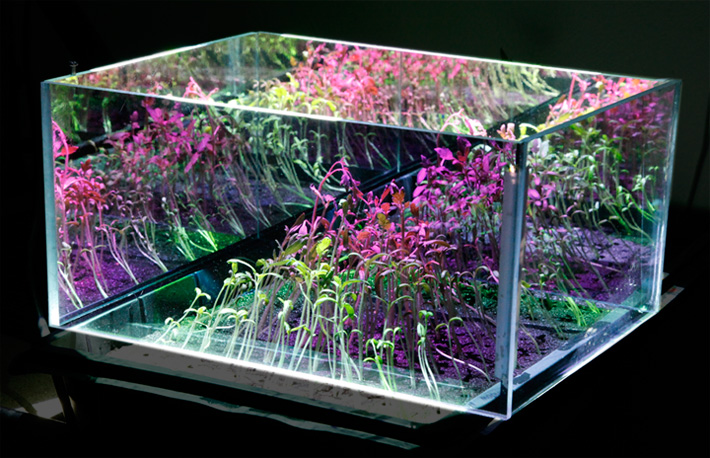
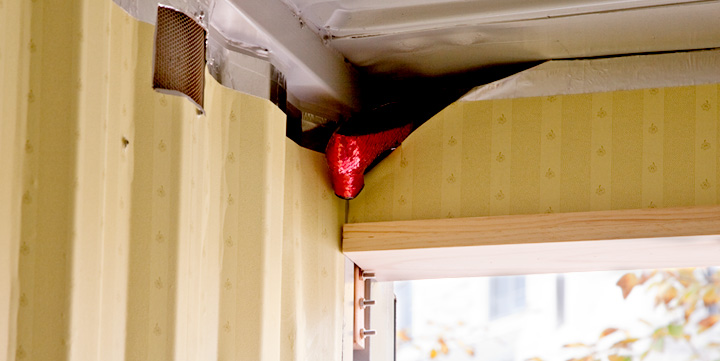
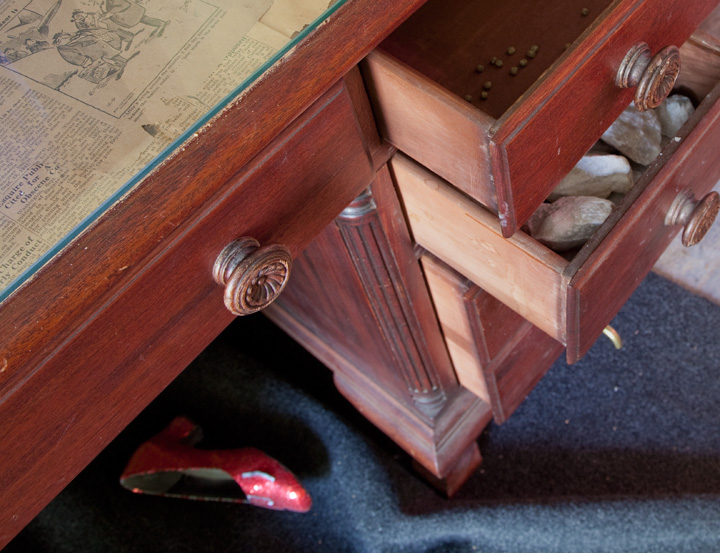
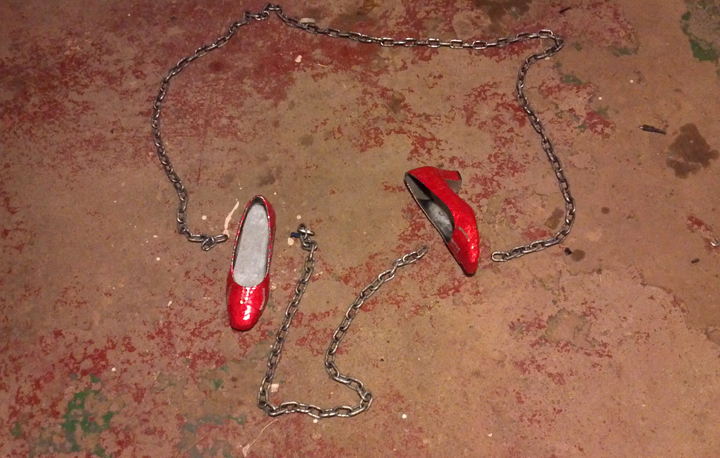
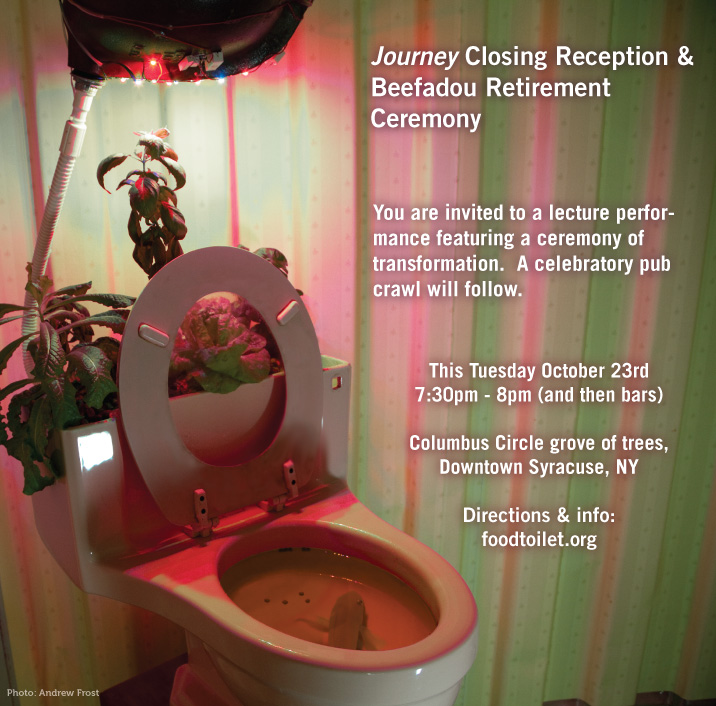




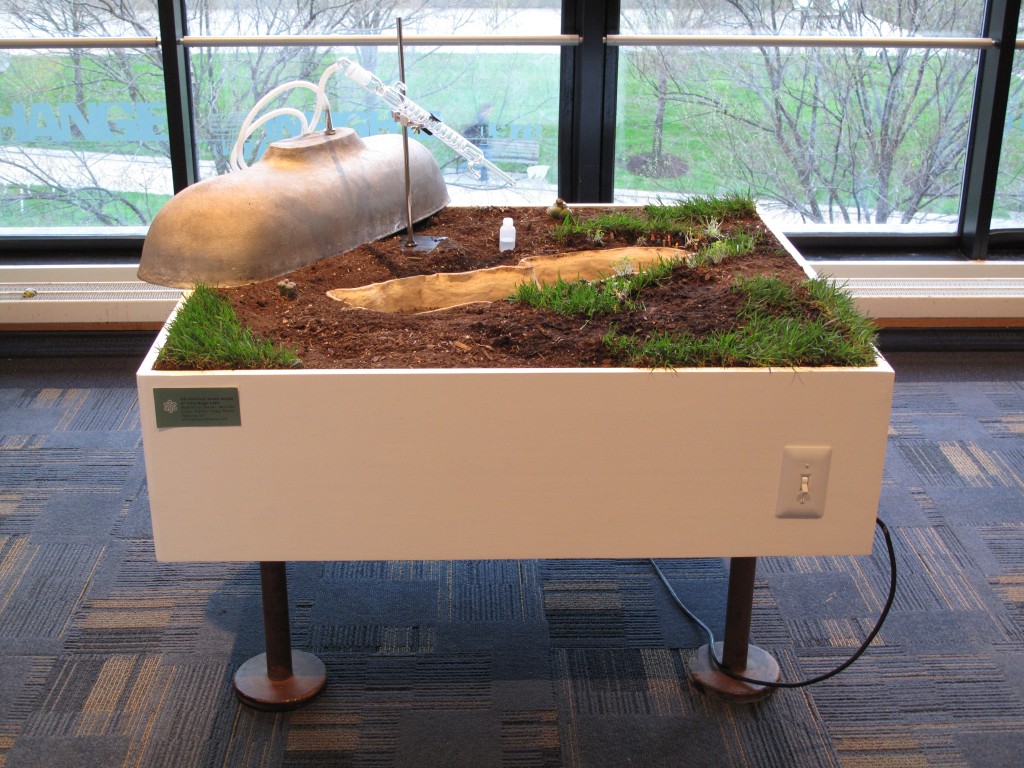
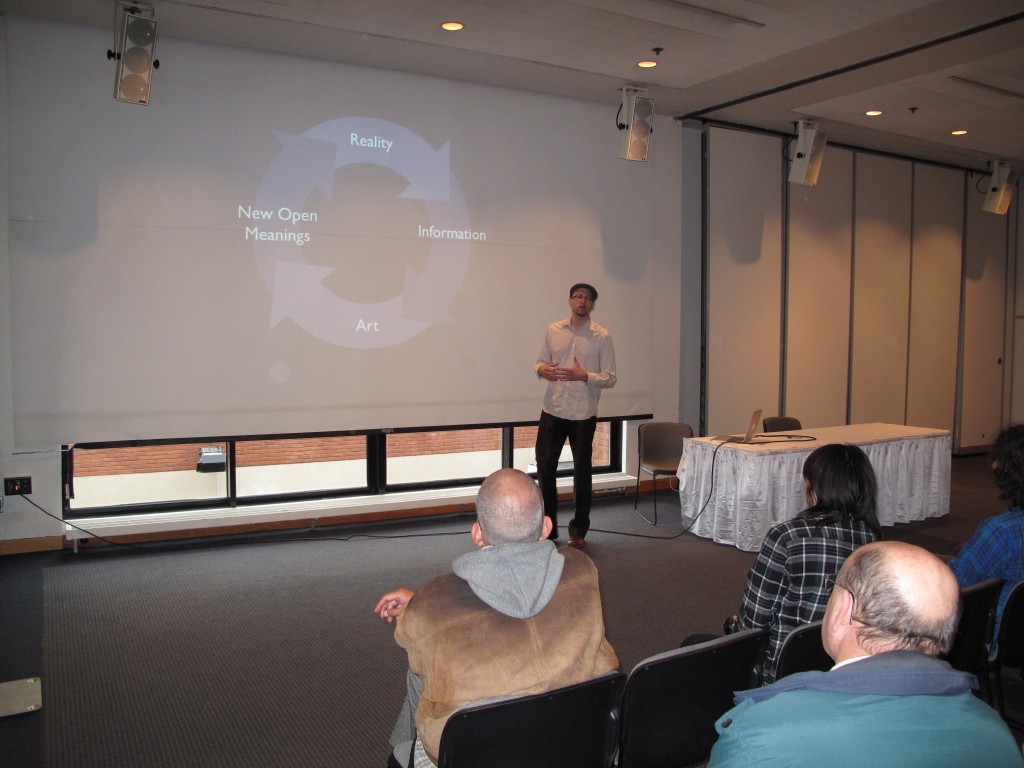

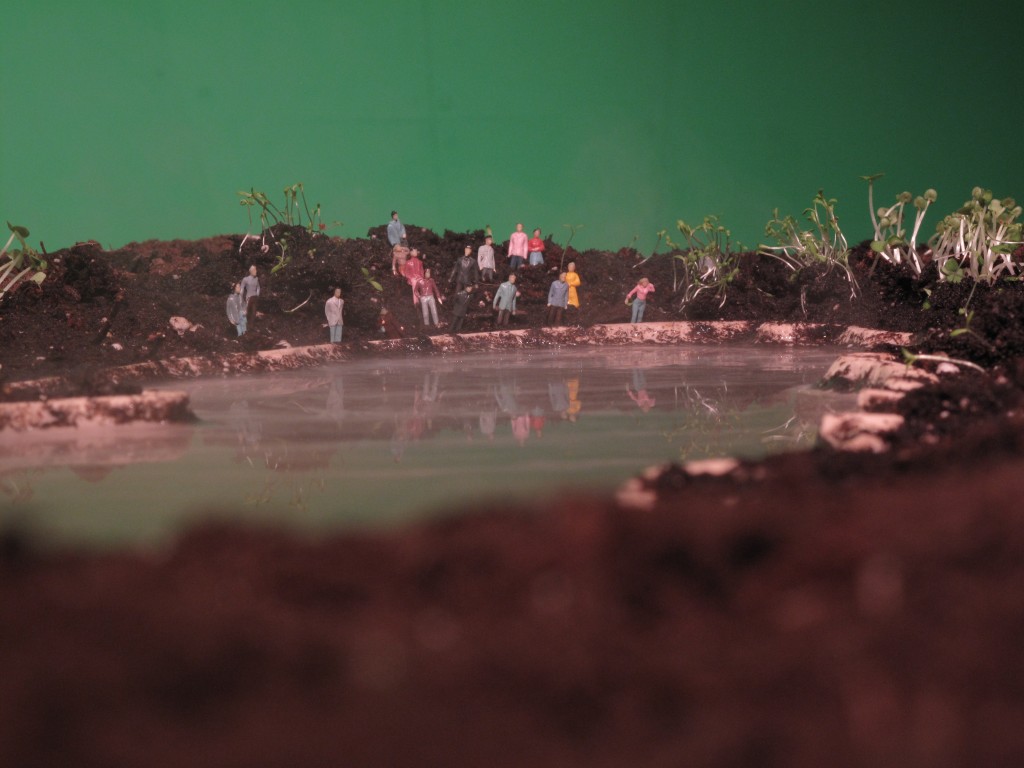
leave a comment